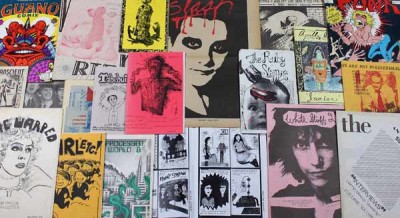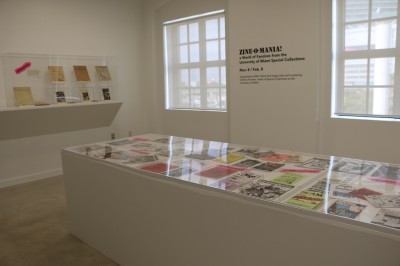
Zines, where words and visuals collide
Like everything today in the cultural arts, interdisciplinary, multi-genre connections are what it’s all about. Isolated communities just don’t cut it anymore – but nor should they ever have. After all, music and dance always found each other good partners, so why not other combinations? Increasingly that’s been the case, with visual artists doing set designs for live performances, musicians backing up poetry readings.
Of course cross-pollination isn’t really new, and the obvious connection between art and writing has been with us since hieroglyphics. In fact, Miami is home to the most remarkable visual art and text collection in the world, The Sackner Archive of Concrete and Visual Poetry, lovingly gathered throughout decades by Ruth and Marvin Sackner. But there’s a new marriage of the two forms recently announced: a formal partnership between Miami-Dade College’s Museum of Art + Design (MOAD) and WAIL (Word And Image Lab), a group of artists and writers that formed in 2009 to promote the idea of a books and art center here.
The two are presenting “Zine-o-Mania: A World of Fanzines from the Special Collections at the University of Miami,” the first exhibition resulting from this partnership. It’s a pop-up gallery filled with pre-cyber printed materials revolving around words and images, literature and design. Zines are a niche of their own, and best described by the curator of the exhibit, Christina Favretto, head of special collections at UM.
“Zines are (fairly) simple to make, but difficult to describe,” she writes. “They’re manifestos, ruminations, screeds, artistic statements… they’re pre-Facebook, pre-Instagram, pre-Twitter, post-magazines.”
Pop-up project room for ‘Zine-o-Mania.’
“Zines is short for ‘fanzines,’ printed vehicles allowing fans of a certain genre – singer, artist, movement – to communicate with one another,” Favretto continues. “They have a long history. One could even argue that the firebrand political pamphlets of Thomas Paine were zines in their own right, but most zine scholars would place their heyday between the advent of cheap mimeograph technology in the 1920s and the punk, do-it-yourself revolution of the late 1970s and early 1980s.”
Most zines in the exhibit originated in South Florida, although there are selections from elsewhere. This is cool stuff, and might fall under the radar, so here’s a heads up – zine exhibitions like this need fans.
“Zine-o-Mania: A World of Fanzines from the Special Collections at the University of Miami” runs through Feb. 8 at MOAD’s Freedom Tower, 600 Biscayne Blvd., Miami; www.mdcmoad.org.
Recent Content
-
Artsarticle ·
-
Artsarticle ·
-
Artsarticle ·


